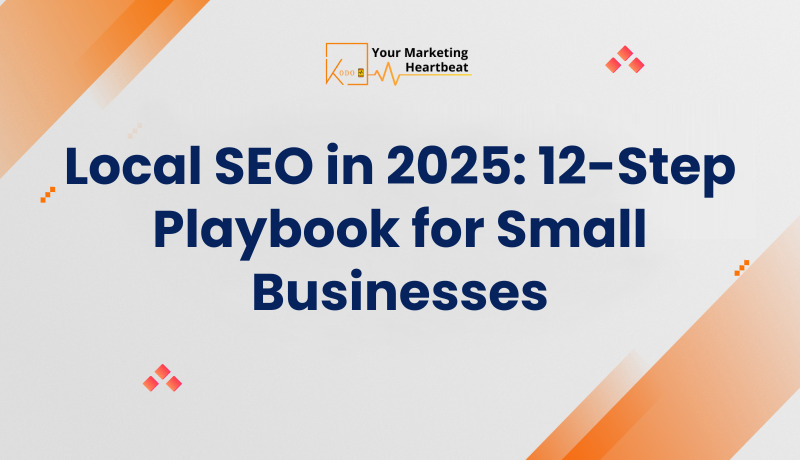The Power of Content Marketing: How to Tell Your Brand Story
Introduction
In today’s digital landscape, content marketing has emerged as a powerful tool for building brand awareness, establishing credibility, and fostering customer loyalty. At the heart of successful content marketing lies a compelling brand story. Telling your brand story effectively can differentiate your business from competitors, engage your audience on a deeper level, and drive long-term success. In this blog, we’ll explore the significance of content marketing and provide actionable strategies for crafting and sharing your brand story to captivate and connect with your audience.
1. Understanding the Importance of Brand Storytelling
Brand storytelling is more than just marketing jargon; it’s a fundamental aspect of content marketing that resonates with your audience and builds an emotional connection. Here’s why telling your brand story is crucial:
- Creates Emotional Connections: A well-told brand story helps your audience relate to your business on a personal level. By sharing your values, mission, and journey, you create an emotional bond that fosters trust and loyalty.
- Differentiates Your Brand: In a crowded marketplace, a unique brand story sets you apart from competitors. It highlights what makes your brand special and memorable, helping you stand out in the minds of consumers.
- Builds Brand Identity: Your brand story is an essential component of your brand identity. It communicates your vision, values, and purpose, shaping how your audience perceives your brand and reinforcing your positioning.
Additional Tip: In 2024, incorporating elements of sustainability, inclusivity, and social responsibility into your brand story can resonate strongly with modern consumers who prioritize these values.
2. Crafting Your Brand Story
Creating a compelling brand story involves more than just outlining your business’s history. It’s about weaving together the elements that define your brand and resonate with your audience. Here’s how to craft a powerful brand story:
- Identify Your Core Message: Start by defining the core message you want to communicate. This should reflect your brand’s values, mission, and vision. Think about what drives your business and what makes you passionate about what you do.
- Know Your Audience: Understanding your target audience is crucial for crafting a story that resonates with them. Research their needs, preferences, and pain points to tailor your story to address their interests and concerns.
- Highlight Key Elements: Your brand story should include key elements such as your origin, challenges faced, milestones achieved, and future aspirations. These elements create a narrative arc that engages your audience and makes your story relatable.
- Emphasize Authenticity: Authenticity is key to a compelling brand story. Be honest and transparent about your brand’s journey, values, and mission. Authentic stories build trust and credibility with your audience.
Additional Tip: In 2024, leveraging user-generated content (UGC) to enhance your brand story can add authenticity and foster community engagement. Encourage your customers to share their experiences with your brand and weave these stories into your narrative.
3. Choosing the Right Content Formats
Once you’ve crafted your brand story, it’s time to choose the content formats that will best convey your message and engage your audience. Different formats can bring various aspects of your story to life:
- Written Content: Blog posts, articles, and case studies are effective for sharing in-depth aspects of your brand story. Use these formats to delve into your brand’s history, showcase customer success stories, and provide valuable insights.
- Visual Content: Infographics, images, and videos are powerful tools for visual storytelling. Use visuals to highlight key elements of your brand story, such as your brand’s evolution, behind-the-scenes looks, or customer testimonials.
- Social Media: Social media platforms offer a dynamic way to share your brand story in bite-sized formats. Use posts, stories, and live videos to connect with your audience, share updates, and engage with your followers.
- Interactive Content: Interactive content such as quizzes, polls, and interactive infographics can enhance engagement and provide a more immersive experience. Use these formats to involve your audience in your brand story and gather feedback.
Additional Tip: In 2024, consider using emerging content formats like augmented reality (AR) experiences and live-streaming events to make your brand story more interactive and engaging.
4. Distributing Your Brand Story
Effective distribution is key to ensuring your brand story reaches and resonates with your target audience. Here’s how to strategically distribute your content:
- Optimize for SEO: Ensure your content is optimized for search engines to increase its visibility. Use relevant keywords, meta descriptions, and quality backlinks to enhance your content’s searchability.
- Leverage Social Media: Share your brand story across social media platforms to reach a wider audience. Use platform-specific features like hashtags, tags, and stories to increase engagement and drive traffic to your content.
- Email Marketing: Use email newsletters to share your brand story with your subscriber list. Include links to your content, updates, and exclusive insights to keep your audience engaged and informed.
- Collaborate with Influencers: Partner with influencers and industry leaders to amplify your brand story. Influencers can help you reach new audiences and lend credibility to your narrative.
Additional Tip: In 2024, leveraging AI-driven personalization tools can help tailor your content distribution to individual audience segments, ensuring your brand story resonates with each group.
5. Measuring the Impact of Your Brand Story
To ensure your brand story is achieving its intended impact, it’s essential to measure its effectiveness and make data-driven adjustments. Here’s how to evaluate the success of your brand storytelling efforts:
- Track Key Metrics: Monitor metrics such as engagement rates, social shares, website traffic, and lead generation to assess how well your brand story is resonating with your audience.
- Gather Feedback: Collect feedback from your audience through surveys, comments, and direct interactions. Understanding their perceptions and reactions can provide valuable insights into the effectiveness of your brand story.
- Analyze Conversions: Evaluate how your brand story influences conversions and customer behavior. Track metrics like conversion rates, sales, and customer retention to determine the impact of your storytelling on your business goals.
Additional Tip: Use A/B testing to experiment with different versions of your brand story and identify which elements drive the best results. Adjust your strategy based on the insights gained from these tests.
Conclusion
Content marketing is a powerful tool for telling your brand story and engaging your audience. By crafting a compelling narrative, choosing the right content formats, strategically distributing your story, and measuring its impact, you can effectively communicate your brand’s values, mission, and vision. A well-told brand story not only differentiates your business but also fosters emotional connections and drives meaningful results.
Remember, storytelling is an ongoing process. Continuously refine your brand story based on audience feedback and performance data to keep your content relevant and impactful. By harnessing the power of content marketing, you can build a strong brand presence, connect with your audience on a deeper level, and achieve your business objectives.
Keywords List:
- Content marketing
- Brand storytelling
- Emotional connections
- Brand identity
- Digital marketing
- Brand awareness
- Content formats
- Social media marketing
- Visual storytelling
- User-generated content
- Authentic brand story
- Influencer collaboration
- SEO optimization
- Email marketing
- Data-driven adjustments
- 2024 content marketing trends
- AI-driven personalization
- Augmented reality marketing
- Customer engagement
- Audience feedback




April 23, 2024